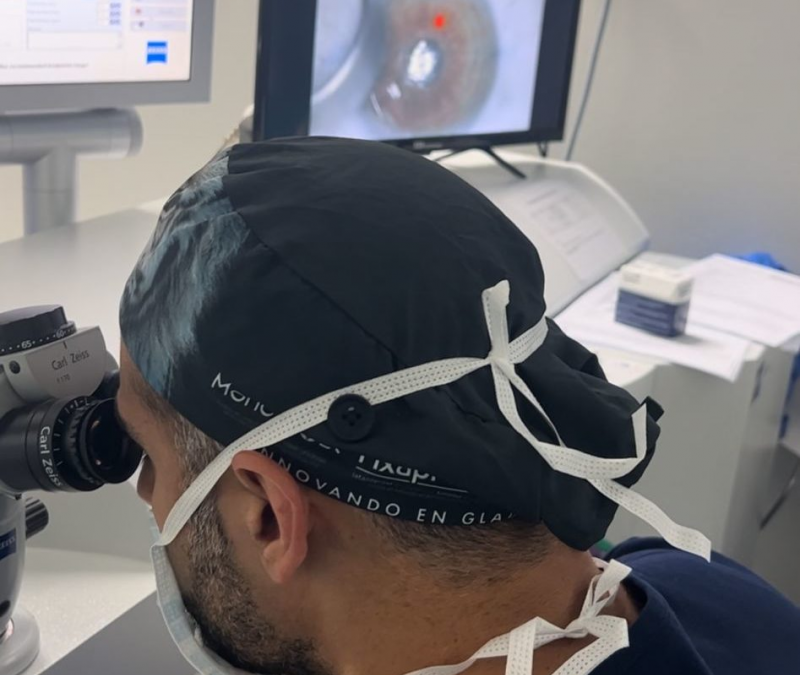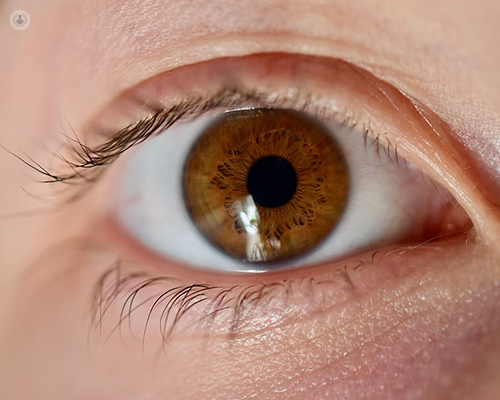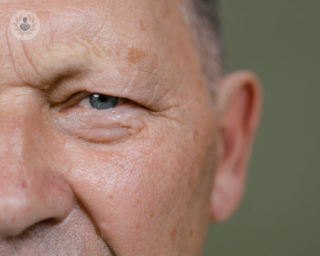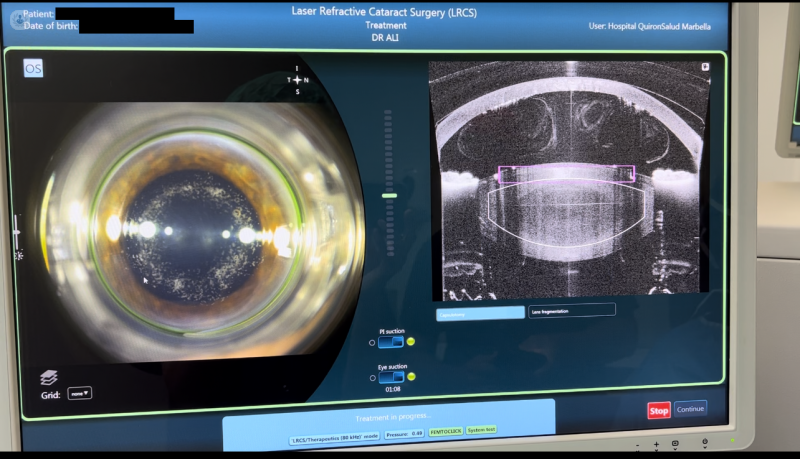Cataract and presbyopia surgery with femtosecond laser and intraocular lenses: an innovative solution
Vision is one of the most precious senses we have, and any problem in our eyes can significantly affect our quality of life. Two common eye conditions that affect many people, especially as they age, are cataracts and presbyopia .
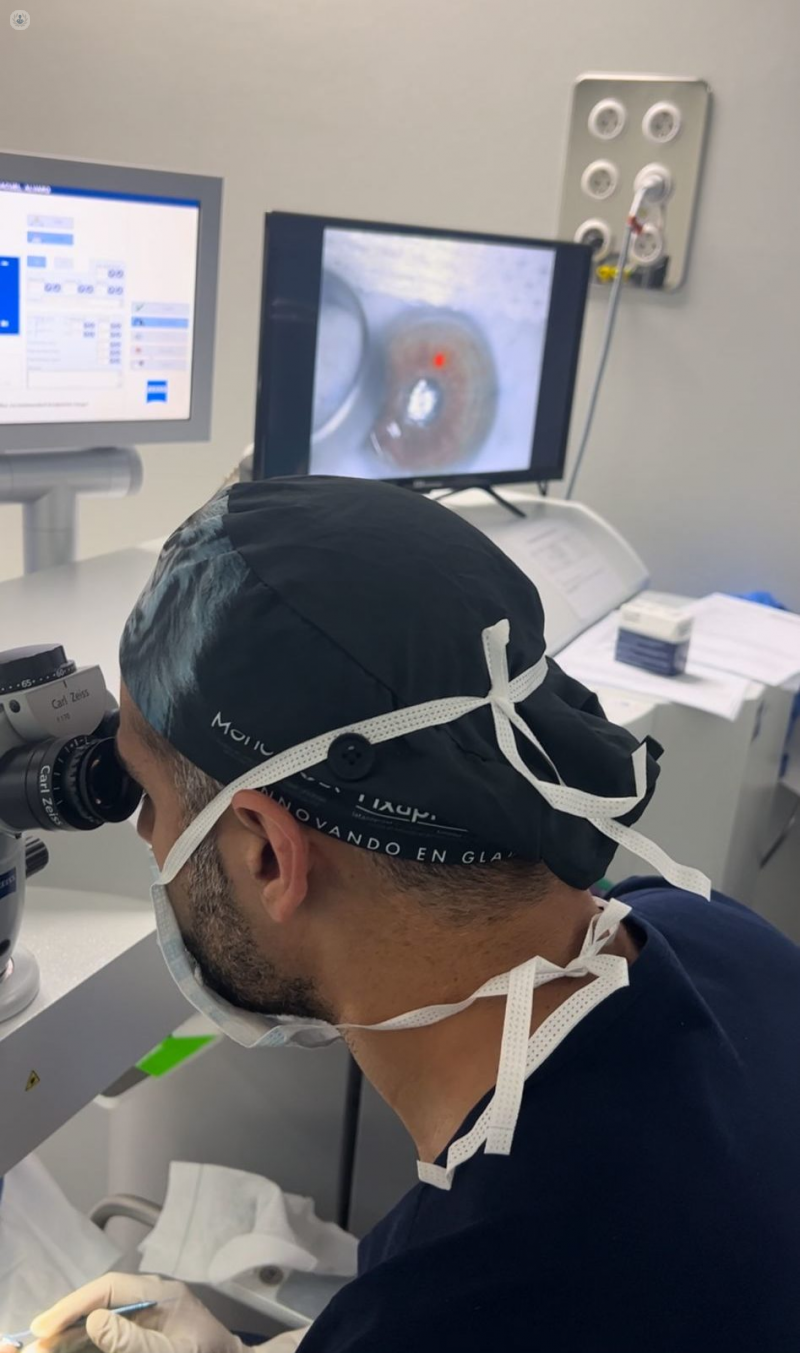
What are cataracts?
Cataracts are a common eye condition that mainly affects older people . They occur when the eye's crystalline lens, which is a natural lens behind the iris, becomes opaque or cloudy.
This gradual process can make vision difficult, causing symptoms such as blurred vision , glare, and difficulty seeing in low light. Cataracts can affect one or both eyes and, if left untreated, can significantly interfere with daily life, affecting the quality of vision and quality of life.
What is presbyopia?
Presbyopia , often called eyestrain , is another common eye condition that manifests with age.
As we age, the eye's lens loses its flexibility, making it difficult to focus on close objects. This results in difficulties reading, looking at your phone, or performing nearby tasks without the need for reading glasses.
What is the solution?
Cataract surgery and presbyopia correction with femtosecond laser and intraocular lenses have led to significant advances in the treatment of these visual conditions.
Below, we will answer some common questions that patients often have about these procedures.
What is femtosecond laser cataract surgery?
Femtosecond laser cataract surgery is an advanced technique that has largely replaced traditional surgical methods.
In this procedure, a femtosecond laser is used to create a precise incision in the cornea, the clear tissue that covers the eye.
This incision is tiny and allows the surgeon to access the cloudy lens in a less invasive way. The laser also breaks down the cataract into small fragments, making it easier to remove.

What are intraocular lenses?
Intraocular lenses are small, clear devices that are implanted in the eye during cataract surgery .
These lenses serve a dual purpose: replacing the opaque lens and, in some cases, correcting other vision problems, such as presbyopia.
There are several different types of intraocular lenses available, and their choice will depend on the specific needs of each patient.
How is presbyopia addressed during cataract surgery?
One of the advantages of cataract surgery with femtosecond laser and intraocular lenses is the ability to address presbyopia at the same time . For this, multifocal intraocular lenses or accommodative lenses can be used.
These lenses are designed to allow the patient to focus on both near and far objects, thus reducing the need for reading glasses.
Who are ideal candidates for these procedures?
Most people with cataracts can be considered candidates for cataract surgery with a femtosecond laser and intraocular lenses.
Additionally, those who also suffer from presbyopia can benefit greatly from this combined surgery as it allows them to address both conditions effectively . However, an ophthalmologist's evaluation is essential to determine the suitability of each patient on an individualized basis.
Is it safe to undergo these procedures?
Femtosecond laser cataract surgery and presbyopia correction with intraocular lenses are safe and effective procedures when performed by experienced ophthalmologists and in appropriate facilities.
As with any medical procedure, there are potential risks, but these are minimal and are further reduced with thorough evaluation and appropriate post-operative care.
What is the recovery process?
Recovery from cataract surgery and presbyopia correction is generally quick . Patients can experience significant improvement in their vision in the days following the procedure.
It is recommended to avoid intense activities and follow the ophthalmologist's postoperative instructions to ensure a complication-free recovery.
If you want more information about the correction of cataracts and presbyopia using intraocular lenses or femtosecond laser, consult with an Ophthalmology specialist .


